Eddie Muller's Noir Bar reveals best drinks for classic films
Pull out that fedora and trenchcoat because it's time for things to get a little dark.
Eddie Muller, known fondly as the "Czar of Noir," is taking readers into smoky backrooms and seedy dive bars with his new book Noir Bar: Cocktails Inspired by the World of Film Noir. The book pairs 50 different noir films with 50 unique craft cocktails, some of which Muller invented himself, hearkening back to his earliest career as a bartender in noir-worthy haunts.
Muller is the founder and president of the Film Noir Foundation, which hosts annual noir film festivals, as well as plays a crucial role in the preservation of noir films. He is also the host of Noir Alley on Turner Classic Movies, a weekly segment that introduces audiences to a new title from the genre.
Noir Bar brings all of Muller's extensive knowledge, commitment to extensive research, and penchant for a good time to the table and swizzles them together with a healthy pour of booze resulting in a book sure to appeal to everyone from a scheming femme fatale to a wise-cracking gumshoe.
The book hits shelves May 23, but EW has an exclusive excerpt of Muller's introduction, as well as the recipes and entries for a Hammett Martini from The Maltese Falcon, a Champagne Cocktail from Sunset Blvd., and The Zeena from Nightmare Alley.
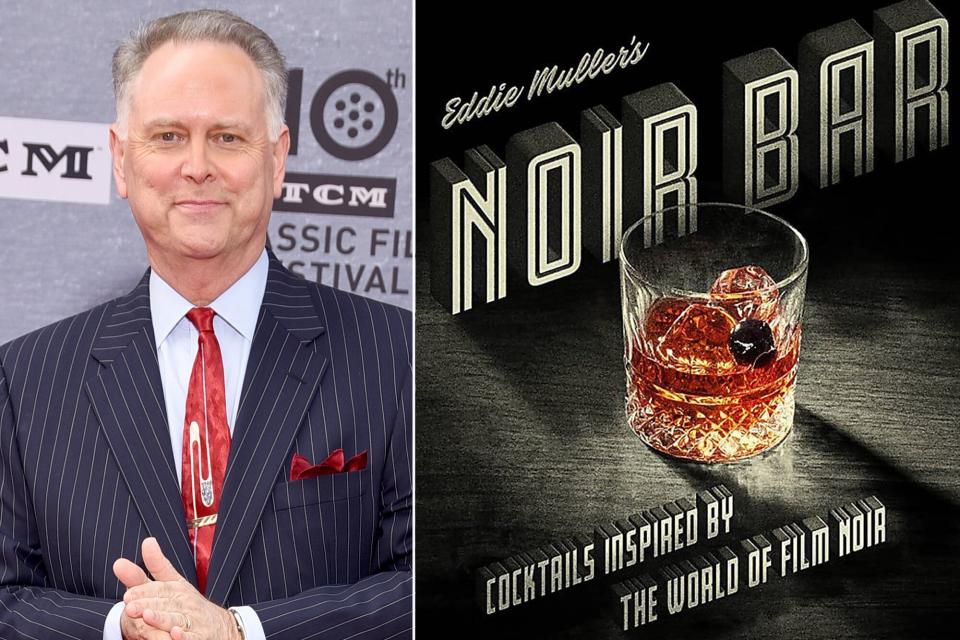
Presley Ann/Getty Images; Running Press Adult Author and film historian Eddie Muller and his new book 'Noir Bar: Cocktails Inspired by the World of Film Noir'
INTRODUCTION
During more than twenty years of presenting film noir to the public — in books, in theaters, on television, now streaming — I've always joked that my shows should be sponsored by the government. Specifically, the Bureau of Alcohol, Tobacco and Firearms. All three figure prominently in classic film noir. Of course, while noir films are today enjoying their greatest popularity ever, modern mores frown on a couple of these vital elements.
Thank goodness cocktail culture is bigger than ever. Nobody needs to pack heat or chain-smoke to savor the darkly seductive allure of noir. But mingling with Robert Mitchum and Lana Turner, cocktail in hand, makes even a rotgut movie a top-shelf experience.
This book is designed to be a drinking companion for anyone taking a deep dive into the glamorous and gritty world of noir. It combines carefully curated classic cocktails with modern noir-inspired libations, plus a host of concoctions created by yours truly expressly for this book. I may be known these days as "The Czar of Noir," but I began my working life as a bartender. Since hitching on as one of the hosts of Turner Classic Movies, I've served up most of my introductions from the evocative Noir Alley set—which I insisted have a functioning bar. During the pandemic, when I was forced to record in quarantine, I hosted a number of shows from my own at-home cocktail lounge. TCM even created a promo for Noir Alley in which I describe my approach to discussing films as "Barroom, Not Classroom."
Noir Bar offers a booze-based excursion through America's most popular film genre, pairing easy-to-master recipes with the kind of behind-the-scenes anecdotes I like to include in my film intros and books. Some of these cocktails are drawn directly from the films—if you're watching The Big Clock and wonder what's in those Stingers that Ray Milland keeps ordering—now you'll know. If you're enjoying Sweet Smell of Success and suddenly have a hankering for one of those Martinis on J. J. Hunsecker's private table, I've got the perfect recipe — learned from one of the world's greatest film directors. Did you know that the vivacious and voluptuous 1930s star Joan Blondell inspired a cocktail (created in Havana) long before she starred in the classic 1947 noir Nightmare Alley? I predict the slightly revised version offered here will become a new favorite. Love Joan Crawford? Wait until you taste a Mildred Pierce, made from orange and grapefruit liqueurs, lime juice, and mezcal. Joan would have given up her beloved vodka for a steady diet of these.
I also include several original recipes to celebrate personal favorites, including the Belita, a frozen concoction of gin, Blue Curaçao, and Menthe-Pastille that honors the figure skater I call "The Ice Queen of Noir." Sam Fuller's 1959 multicultural noir The Crimson Kimono gets a namesake cocktail comprising Japanese, Italian, French, and American ingredients. And Rita Hayworth is toasted with Sailor Beware, my original cocktail for The Lady from Shanghai, which, like the film that inspired it, is unique, complex, and packs a hell of a wallop.
I learned to be a professional bartender in the late 1970s, in an old barroom on Larkin Street in San Francisco. It had been converted into the Golden Gate Bartending School. My teacher was a retired barkeep named Al "Mac" McLaughlin. Our textbook was a fat binder of cocktail recipes he'd amassed over the years. The expansive array of booze in the backbar was just bottles filled with colored water or tea, because Mac had no intention of going broke. Tuition didn't cover real booze. A few students griped about this fact, as we never actually tasted what we were making. Mac said if we wanted to know what a drink tasted like, "Do the homework on your own time." Remember, this was an era when pot-smoking was the illicit rage and cocktails were largely passé. The few drinkers my age consumed things like Harvey Wallbangers, not artisan libations made with rare spirits and tinctures.
But Mac's teaching strategy was based on more than just stinginess. He believed 90 percent of being a bartender was about how you handled yourself behind the stick. Memorizing hundreds of recipes mattered less to Mac than our mastering ACE — attitude, conviviality, and efficiency. That's because the vast majority of the people drinking in bars are after a good time, not an artisanal imbibing experience. Our final exam consisted of Mac, his wife, and some of his pals sitting at the bar, barking out a stream of cocktail orders while peppering us with questions about local politics, the Giants' chances that year, the relative sexiness of American and French actresses, whatever. One classmate, a guy who'd been acting like a booze expert since day one, finally snapped, "Okay, Mac, enough. I'm trying to work."
Immediate fail. Complete lack of ACE. I'm surprised Mac didn't throw him out on the sidewalk.
Mac's lesson still stands, even as over the years I've learned to appreciate the "spirit world" as a professional drinker and not just a guy who can make Rusty Nails, Ward Eights, Grasshoppers, and Corpse Revivers No. 1 . . . and No. 2. What's a professional drinker? Somebody who imbibes every day but never gets drunk. Well, almost never. As my tolerance for alcohol increased, so did my intolerance for amateurs. (I do have to credit all those drunken young amateurs for spurring my early career change, though.)
This is a cocktail book both for seasoned drinkers who love film noir and hard-core movie fans just beginning their foray into mixology. For the latter, the book includes some brief primers on how to economically assemble a battery of spirits, liqueurs, mixers, bitters, and garnishes, as well as professional tips on creating and maintaining an at-home bar.
When it comes to drinking, my approach is as inclusive and inviting as it is when I'm presenting movies; I avoid anything too high-brow, academic, pretentious, or, in this case, needlessly expensive, and focus on being economical, efficient, and entertaining. In addition to "Barroom, Not Classroom," another credo of mine has always been "It's better to be accessible than definitive." Instead of offering a recipe for every situation, my goal is to give you the knowledge, inspiration, and enthusiasm to start creating your own cock-tail recipes.
I do not have much use for the new breed of hipster mixologists who build drinks from only the most obscure ingredients and prepare them like medicinal formulas. The point of drinking a cocktail or two is to enhance life's blessed interludes of relaxation and/or boost our enjoyment of time shared with friends. For the purpose of this book, I extend that list of friends to include John Garfield, Ava Gardner, Humphrey Bogart, Barbara Stanwyck, and many other memorable denizens of the film noir demimonde.
That's not to say making cocktails isn't an art and a science. It truly is. But, like everything else worth doing, it should be fun — especially if you're not getting paid for it.
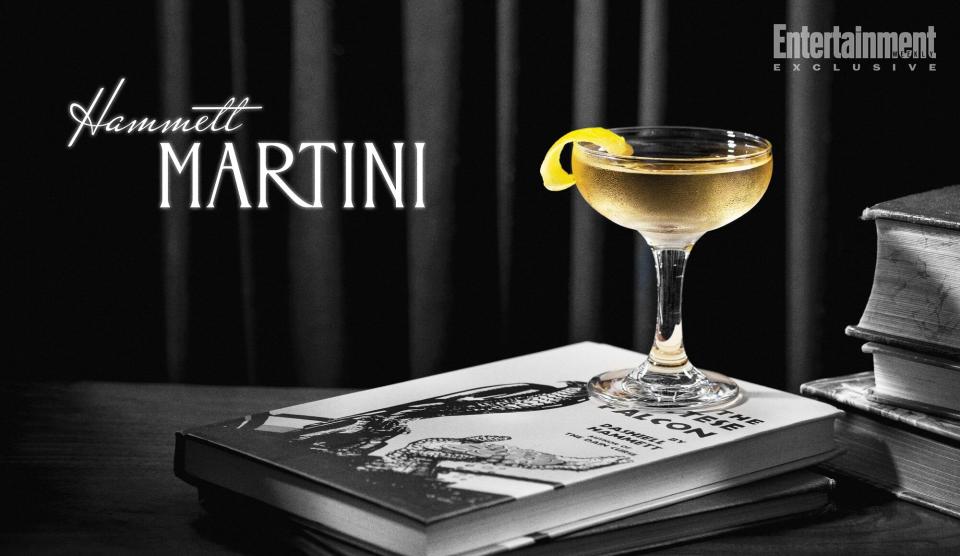
Steve Legato A Hammett Martini from 'Noir Bar'
THE MALTESE FALCON paired with the HAMMETT MARTINI
I know full well there are noir fanatics out there who love their booze but have no use for cocktails. Their beloved antiheroes take their liquor straight, typically whiskey — Scotch, Bourbon, or rye — sans exotic liqueurs or fruity garnish. When they think of Sam Spade, they see him pouring out a tumbler of Old Forester to mull over the murder of Miles Archer. It may come as a surprise to these guys that in Dashiell Hammett's legendary 1929 novel — basis for the classic 1941 film that kick-started the noir movement — Sam serves himself a copious amount of Bacardi rum in a wineglass while pondering his partner's demise. Bacardi is cited several times in the book and, besides some brandy he pours in Bridget's coffee, it seems to be the sole spirit on hand in the detective's San Francisco apartment.
As for the father of modern crime fiction himself, a man known to drink long and hard into many a dark night — a vodka Martini (preferably made with Stolichnaya, a recent import) was the go-to libation. A nod toward the writer's Marxist ideology? Or just a sensible alternative given that he sometimes started the day's intake at breakfast? Late in life Hammett was advised by his doctor to stop drinking. Displaying the kind of discipline that characterized his fictional detective, Hammett stopped that day, cold turkey. What makes this all the more impressive is that, according to his daughter Jo, he continued hosting convivial cocktail parties for the duration of his life. He'd even enjoy making a Martini and watching a confidant drink it for him.
This cocktail is my tribute to Hammett, whom I will always deem the essential artist in the development of noir. In a "spirit"-ual sense, it blends the writer with his fictional alter ego. And, oh yeah, it's pronounced Dash-eel, not Dash-ul.
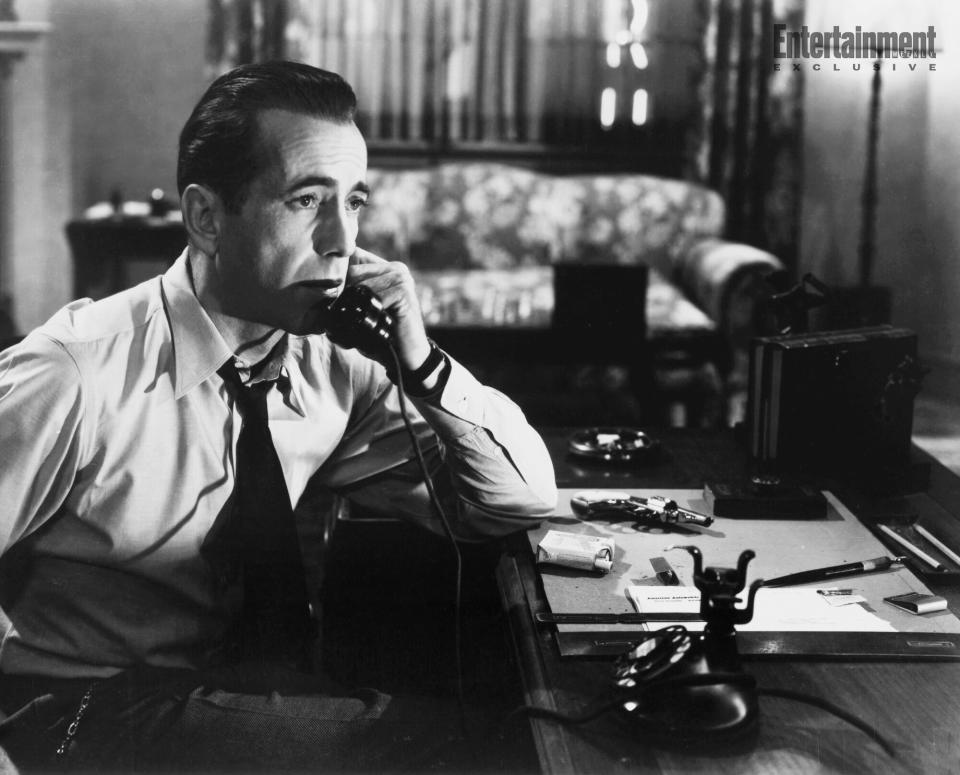
WarnerMedia Archive Humphrey Bogart in 'The Maltese Falcon'
HAMMETT MARTINI
COUPE GLASS, chilled
MIXING GLASS, stirred
2¼ ounces . . . . . . . . . . . .Stolichnaya vodka
¾ ounce. . . . . . . . . . . . . . . . . . .Bacardi rum
¼ ounce . . . . . . . . . . . . . . . . . . . Bénédictine
Garnish. . . . . . . . . . . . . . . . lemon peel twist
NOTES: Amazingly, vodka and rum can mix, but a small amount of Bénédictine balances things — much the way Spade brokers a tentative truce between avaricious treasure-hunters. I suspect Spade drinks Bacardi Superior, a white rum common in the '20s, but I suggest the richer, golden Ocho. Either works. Hail Hammett, the godfather of hard-boiled crime fiction, and by extension, film noir.
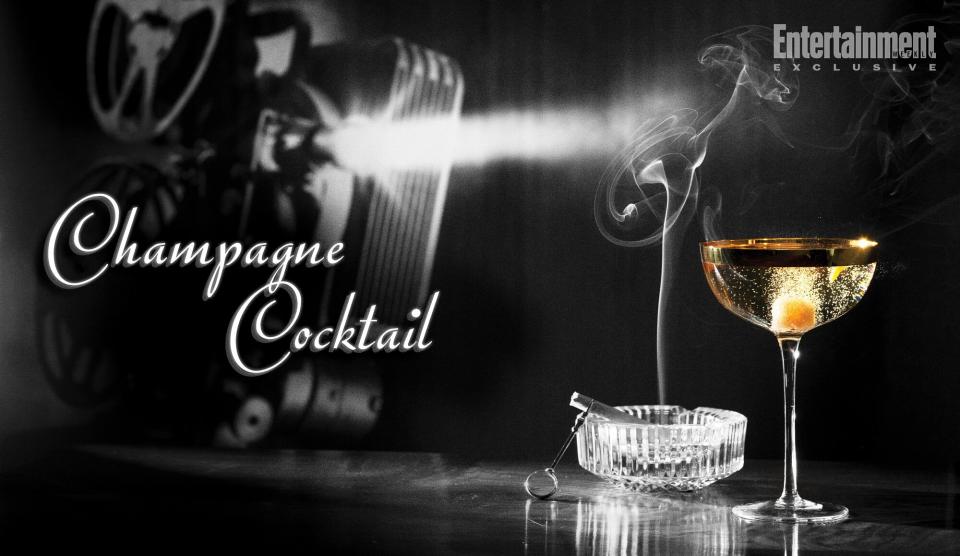
Steve Legato Champagne Cocktail from 'Noir Bar'
SUNSET BLVD. paired with a CHAMPAGNE COCKTAIL
Don't even try to argue that Sunset Blvd. is not a film noir. The level of corruption, paranoia, and delusion in Billy Wilder's 1950 masterpiece makes Double Indemnity seem like a romantic comedy by comparison. You need fateful coincidence? Poor Joe Gillis (William Holden) had hundreds of driveways to veer into as he dodged the repo men; he picked the one belonging to aging screen queen Norma Desmond, a femme fatale if ever there was one. Need desperation in your noir? Is anyone in cinema more desperate than Norma? A self-destructive hero? Joe, it's too late to give back the trinkets and the vicuna topcoat. A crime? Only murder. Hard-boiled, world-weary voice-over? Holden offers the best ever. Visual style saturated with dread? David Lynch used it as the template for Eraserhead.
I love this movie. And despite Wilder's mordantly cynical talent for depicting humans at their worst, I always feel an ache of empathy for Norma and Joe. They're a matching pair of manipulative users, but there are moments when your heart can't help but break for them, and to me that's where the film's true genius lies. The sadness of Norma's desolate New Year's Eve party, her desire to turn back the clock with a new handsome, talented, and young leading man... it's crushing. Joe winds up dead in the swimming pool he always wanted; Norma will spend the rest of her life in the nuthouse.
They deserve a toast with the Champagne Max poured out on that fateful New Year's Eve: "Here's to Norma and Joe, film noir's oddest couple."
Although it's common for Champagne to be served in a flute, I prefer a coupe glass, which accentuates the wine's effervescence, especially in this cocktail, where the sugar cube ignites a lovely, steady stream of bubbles. Some people — such as Phantom Lady producer Joan Harrison — like to add a bit of Cognac to this recipe, although it's not in the original, which dates all the way back to Jerry Thomas's legendary The Bartender's Guide, published in 1862 (predating even Norma Desmond!).
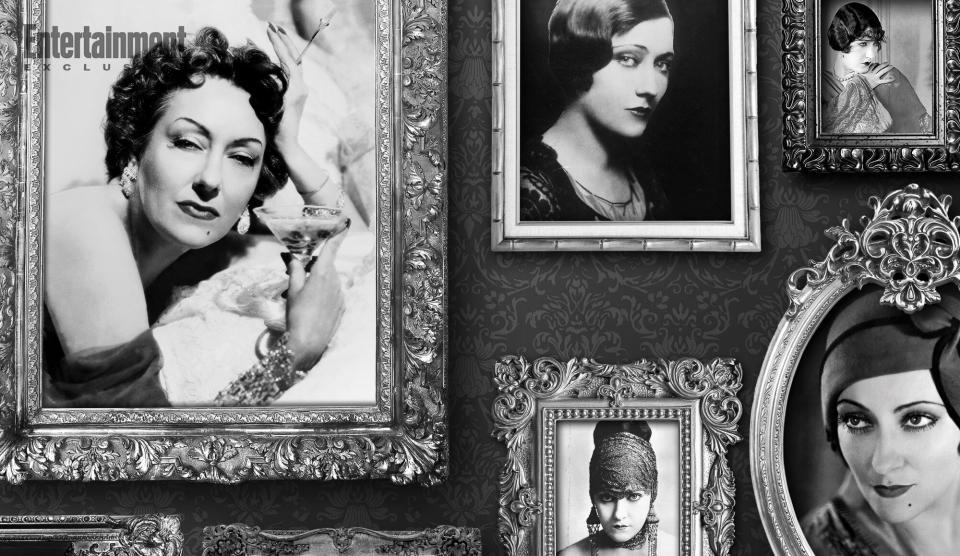
Everett Collection Sunset Blvd. as featured in Noir Bar
CHAMPAGNE COCKTAIL
COUPE GLASS OR FLUTE, chilled
Build in glass
. . . . . . . . . . . . . . . . . . . . .Champagne (brut)
1. . . . . . . . . . . . . . . . . . . . . . . . . . . sugar cube
Dashes. . . . . . . . . . . . . . . Angostura bitters
(to suit your personal taste)
½ ounce . . . . . . . . . . . . . .Cognac (optional)
Garnish. . . . . . . . . . . . . . . . lemon peel twist
CONSTRUCTION: Put the sugar cube in a barspoon held over a coupe or flute. Put 2–4 dashes of Angostura bitters on the sugar cube and drop it in the glass. Fill with ice-cold Champagne. Express lemon peel over the surface and then place in the drink.
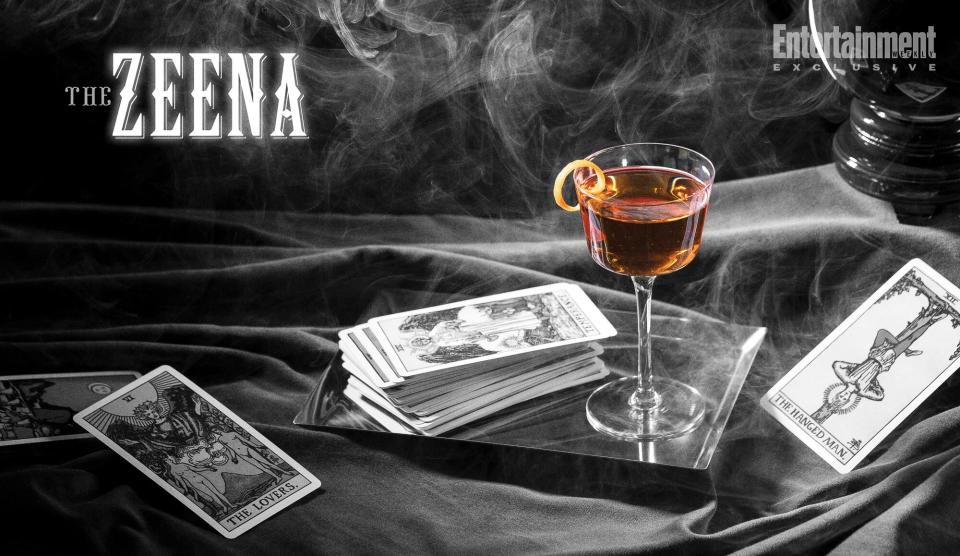
Steve Legato The Zeena from Noir Bar
NIGHTMARE ALLEY paired with the ZEENA
In truth, I can't take credit for creating this drink. The recipe comes through several iterations, and I'll give credit where it's due. First off, the drink is based on the Joan Blondell cocktail, created in the early 1930s at Sloppy Joe's bar in Havana. That'll show you how popular the spunky and sexy actress was in the pre-Code era, showing off her vivacious personality, shapely legs, and a gift for spouting sassy one-liners with Jimmy Cagney. The original had a gin base, but in 2020 my pal Jim Morton, an expert on East German cinema, onetime publisher of the legendary fanzine Trashola, and an amateur mixologist of expert taste, substituted rye for gin — which happily eliminated some of the drink's overeager sweetness.
I introduced Jim's variation to Vince Keenan, editor of the Noir City magazine and half of the writing team Renee Patrick, author of mystery novels featuring Edith Head as a Hollywood crime-solver. Vince felt the switch from gin to rye mandated a new name; He christened it the "Zeena," in commemoration of Blondell's fabulous turn as a carnival mentalist in the 1947 noir classic Nightmare Alley. The cocktail evolved in much the same way as Blondell herself — transitioning from a pert and sweet cutie to a woman deeper, wiser, and more full-bodied.
Nightmare Alley is a touchstone for me, both the 1946 novel by William Lindsay Gresham, and the 1947 film version made at 20th Century–Fox. It may be the most cynical, nihilistic film ever produced in Hollywood, and Zeena is one of its few lovable characters—a huckster and a charlatan, just like everybody else, but with a sense of decency and a good heart. As she says, "Yeah, I've got a heart like an artichoke, a leaf for everybody."
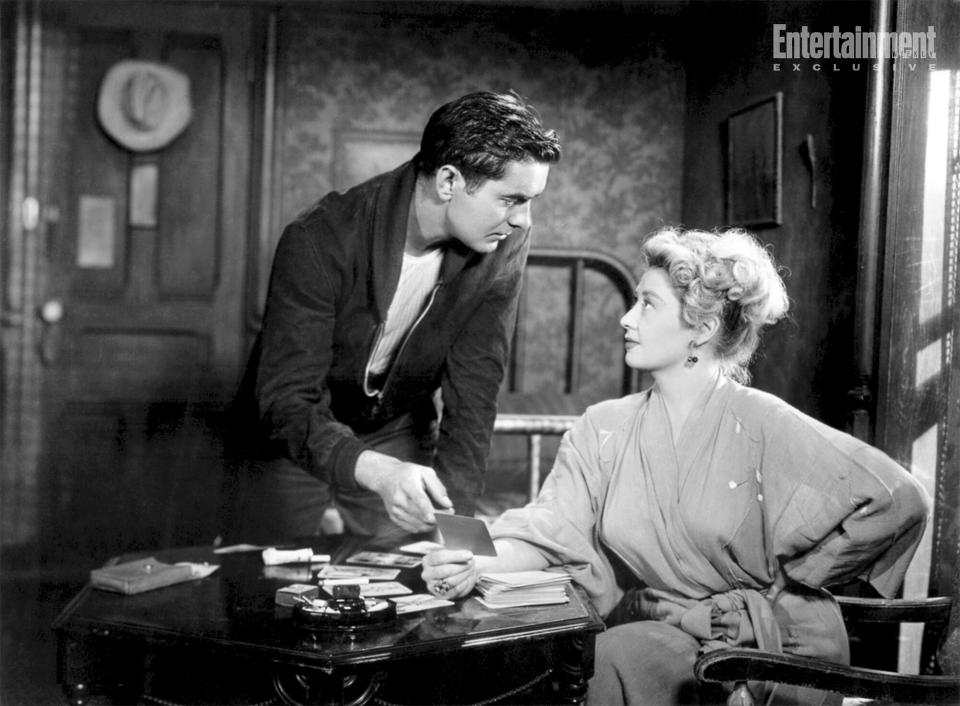
Film Noir Foundation Tyrone Power and Joan Blondell in 'Nightmare Alley'
THE ZEENA
COUPE GLASS, chilled
MIXING GLASS, strained
2 ounces. . . . . . . .rye whiskey (or Bourbon)
¾ ounce. . . . . . . . . . . . . . . .sweet vermouth (Cocchi di Torino, preferred)
¾ ounce. . . . . . . . . . . . . . . . . . . Bénédictine
Dashes. . . . . . . . . . . . . . . .Angostura bitters (to suit your personal taste)
. . . . . . Absinthe rinse (or Pernod or Pastis)
Garnish. . . . . . . . . . . . . . . .orange peel twist
CONSTRUCTION: Do not underestimate the necessity of the absinthe rinse. Pour a small amount of absinthe (or Pernod or Pastis) into the chilled coupe, tilt it side-ways, and rotate to coat the glass. Pour the excess into the other glass if you're making more than one, and carefully shake out the glass(es) so only a thin coating remains. Strain the mixed drink into the coupe and garnish with an orange twist. This is a personal favorite.
Excerpted from EDDIE MULLER'S NOIR BAR: Cocktails Inspired by the World of Film Noir by Eddie Muller. Copyright © 2023. Available from Running Press, an imprint of Hachette Book Group, Inc.
Related content:

